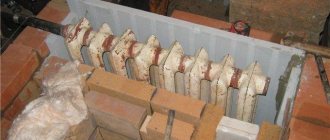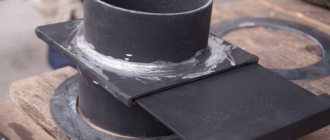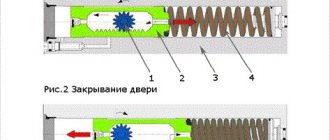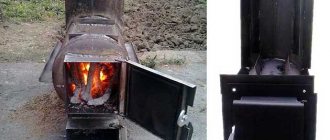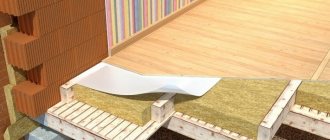Despite the widespread use of modern heating boilers, traditional stoves do not lose their relevance. However, their effectiveness sometimes leaves much to be desired. Installing a heat exchanger for the stove will make it truly versatile. Not only the surrounding air will warm up, but also the coolant circulating through the system. Buying a new full-fledged boiler is not always advisable. Especially if a zealous owner has the desire, opportunity and guidance for action.
Choosing material
The coil is traditionally made from a pipe, the length and diameter of which are determined by the desired level of heat transfer. The efficiency of the structure will depend on the thermal conductivity of the material used. The most commonly used pipes are:
- copper with a thermal conductivity coefficient of 380;
- steel with a thermal conductivity coefficient of 50;
- metal-plastic with a thermal conductivity coefficient of 0.3.
Copper or metal-plastic?
With the same level of heat transfer and equal transverse dimensions, the length of metal-plastic pipes will be 11, and steel pipes will be 7 times longer than copper ones.
That is why it is best to use annealed copper pipe to make the coil.
Such a material is characterized by sufficient plasticity, and therefore it can easily be given the desired shape, for example, by bending. The fitting is easily connected to the copper pipe with a thread.
We are looking for improvised means
Considering the high cost of materials, it would be appropriate to consider the possibility of using products that have already served their purpose, but have not yet fully exhausted their service life. This will not only reduce the cost of manufacturing the heat exchanger, but will reduce the time for installation work. As a rule, preference is given to:
- any heating radiators that do not leak;
- heated towel rails;
- radiators from cars and other products of similar design;
- instantaneous water heaters.
Installing a coil on a pipe
This is an excellent and fairly simple way to increase the efficiency of the stove. Flue gases heat the pipe to extremely high temperatures. The outer coil, like the inner one, helps reduce the temperature and somewhat cool the outer surfaces of the chimney. An external water heat exchanger is especially often installed on metal chimneys. This is an excellent auxiliary device for heating small spaces.
This heat exchanger has two pipes. The top one is connected to a pipe going to the storage tank, the bottom one is connected to the heating circuit. It is easy to make such a structure, as well as attach it to a pipe.
Use copper pipe or ready-made modules.
Design features
Most often, a metal tank with a capacity of up to 5 liters with built-in pipes acts as a heat exchanger. There is no direct contact with fire. The device allows you to heat cold water, which then flows into radiators or a removable tank of larger capacity located in the same or an adjacent room.
As a result, by heating the stove in one room, it will be possible to heat another. According to its design, the heat exchanger for a furnace can be external or internal.
External
This type is very similar to a tank filled with coolant. Inside the container there is a part of the pipe used to remove combustion products. In terms of its design, the external heat exchanger is more complex than the internal one, as it places increased demands on welding work.
However, its maintenance is much easier. If necessary, the tank can be dismantled to remove scale or eliminate leaks.
Interior
Mounted above the firebox directly inside the stove. It is easy to install, but if maintenance is necessary, certain difficulties may arise. Especially if the stove is made of brick.
To avoid this, at the time of design development it is worth taking care of the maintainability of the future heat exchanger.
What do we usually expect from a fireplace?
When we - you, me or anyone else - sitting in front of a computer screen, drawing our project or just thinking about the topic of heating a house, think about a fireplace and heating a house (especially if we think about the first and second at the same time), we often forget the primary expectations from the fireplace itself. Firstly, we forget the difference between an open fireplace and a fireplace with a door. And it is significant if the door is ordinary. The fact is that fireboxes come in “grate” and “hearth” types. I recently wrote a separate article about this, “Modern fireplace door with fireproof glass - important features!”
Many people know very well what the beauty of open fireplaces is. But it's unlikely that many people can distinguish between the important features of a fireplace insert (or any fireplace with a door) and an open fireplace. And even more so, fewer people will be able to choose a door behind the glass of which the fireplace will burn with the effect of an open fireplace - a good hearth door. The vast majority of steel fireplaces and any fireplaces with doors are grate. This is required for heating efficiency. The combustion in them is completely different; the aesthetics of burning wood in them will never compare with an open fireplace or a fireplace with a good hearth door.
Secondly, here is my personal experience and the experience of my colleagues. In order not to constantly put off starting the fireplace and generally be able to enjoy the view of the flame, the fireplace should be located in the most visible place in the living room. Also, he should not occupy a key place - so as not to get in the way. This is, of course, obvious, but when the question of the water circuit arises, we begin to scroll through the many placement options for profitable home heating. Often, we forget about the above-mentioned obviousness for the sake of heating efficiency.
Choosing the design of the device
When choosing a suitable heat exchanger for a furnace, you should strive to ensure that the total surface area of the finished product is as large as possible. This will ensure the most efficient heating of the room.
Coil
The most widespread are registers (coils). Such heat exchangers are made from smooth-walled pipes with a diameter of 40 - 50 mm. Outwardly, they resemble a characteristic L-shaped grille. For their manufacture, you can use not only round, but also profile pipes with a similar cross-sectional area.
The return and hot water outlet can be located either on one side of the register or on different sides.
The output option is determined by the design features of the furnace itself and the piping layout of the heating system.
Tank
The next most popular are rectangular or cylindrical tanks, inside of which there is a pipe or coil. The length of such a heat exchanger depends on the parameters of the furnace firebox. The heat exchanger installed on the chimney usually has a cylindrical shape. There is a pipe running inside it, the diameter of which is equal to the diameter of the chimney. The pipes are welded from below. Can be used both for heating a room and for heating water.
This design requires special attention. Due to the rapid cooling of combustion products, the draft in the chimney itself is significantly reduced. This helps slow down fuel combustion.
Installing the product on a heating and cooking stove requires special attention. Care must be taken to ensure that hot gases pass over the top shelf and enter the chimney at the front of the firebox.
In this case, the cooking plate can be located directly above the heat exchanger. It is also possible to manufacture a register without a top shelf. The so-called shelf consists of lower and side parts connected to each other by pipes.
Working principle and functions of the heat exchanger
The coolant in the heat exchanger can be water or antifreeze.
A liquid heat exchange device is a container, part of the furnace structure, equipped for connection to a pipeline. The tank heats up in contact with the products of fuel combustion and transfers this energy to water. Water, moving through the system, gives off heat to heating devices - radiators, from which the air is heated by convection. Heating of the container can be direct or indirect, and the circulation of the coolant can be natural or forced.
Coolant
Instead of water, antifreezes based on ethylene glycol, propylene glycol, alcohol or oil are often used. Their main advantage is their low freezing point, ranging from -30 to -70°C. The exact numbers depend on the chemical composition and concentration of the liquid. The use of such chemistry provides a number of advantages:
- protection of system elements from damage due to defrosting;
- anti-corrosion protection due to appropriate additives;
- absence of abrasives, salts and other impurities that destroy (clog) the pipeline or fittings.
Some heat exchangers, for example for a bath, serve not only heating devices, but also a shower or a separate tank. That's why water is used here. To avoid defrosting, the device is designed so that filling water does not take much time. If the bathhouse or sauna is heated frequently, and the enclosing structures are well insulated, the problem is eliminated.
Propylene glycol is expensive, alcohol and oil are fire hazards, and ethylene glycol is a highly toxic coolant.
Heat exchanger functions
The function of the heat exchange tank, as part of the furnace structure, is to receive and transfer heat to the coolant from combustion products. But as an element of a wider system (heating, water supply), it solves several problems.
- Distribute heat evenly and economically throughout heated rooms.
- Provide your home (cottage, cottage, bathhouse, apartment, etc.) with hot water.
- Accumulate thermal energy for use when the stove is not working.
A heat accumulator connected to a heat exchanger for a wood stove stores energy thanks to the thermal capacity of the storage agent. Therefore, it can be made by insulating any container. A barrel covered with polyurethane foam and partially filled with crushed stone or sand is already a heat accumulator. If you equip it with four pipes and connect it correctly, the unit will become a functional element of the system.
Cooling by 1°C, water heats 1 m3 of still ambient air by 4°C. The successful use of water heat accumulators is associated with this.
Design Rules
When developing a design, it is important to ensure that the following conditions are met:
- internal voids in the heat exchanger must be greater than 5 mm. With a smaller width, water may boil;
- to avoid burning of the material, pipes with a wall thickness of more than 3 mm should be used;
- It is necessary to provide a gap of 10 - 15 mm between the firebox wall and the heat exchanger to compensate for the expansion of the metal when heated.
Ways to increase efficiency
Potbelly stoves are made in various shapes and sizes. But they have one drawback in common - low efficiency. More than half of the thermal energy, in the literal sense of the word, flies out into the chimney. The irrational use of heat has led to the fact that the owners of these heating devices began to think about possible changes in the design of the furnace to increase its efficiency. The solution to this problem could be a partial modernization of the potbelly stove. There was no single concept for solving this issue, and each stove owner began to solve the problem independently, by trial and error.
Increasing the efficiency of a potbelly stove means receiving additional heat from the heating device while maintaining a constant amount of burned fuel. This can be achieved in several ways:
- changing the heat transfer surface,
- increase in heat removal;
- using more high-calorie fuel;
- increasing the heat capacity of the furnace.
The potbelly stove gives off heat to the surrounding space not only with its body, but also with its metal chimney. You can increase the heat transfer surface of the device by revising its dimensions upward. This option is possible when creating a stove with your own hands. Having already made a potbelly stove, you can do it in another way. Usually a corner is welded to a chimney made of a metal pipe. Position it with its apex facing the element along its entire length. The angle is installed around the pipe. Thus, the area of the heat transfer surface can be increased by 3-4 times, depending on the size of the corner.
Another option for increasing the heat transfer surface is to make a chimney running inside a large area. For this purpose, a chimney with turns is made. They are performed in the form of smooth transitions. It is undesirable to create turns at right angles, as the potbelly stove may start to smoke. The last section of the chimney is installed vertically. A pocket is made on it with a hatch for cleaning soot.
Let's start installation
The sequence of work depends on the design features of the heat exchanger.
Installation of a device with a register
When installing in an old furnace, you will have to dismantle part of the masonry. The sequence of work is as follows:
- We prepare the foundation for the coil right in the firebox cavity.
- We install the coil.
- We lay the disassembled row of bricks, leaving space for the inlet and outlet parts of the pipes.
- We connect the heat exchanger to the heating system.
Before use, the tank must be checked for leaks. You can make sure there are no leaks by filling it with water, preferably under pressure.
Installation of a device with a container
The best option for a stove or fireplace. Made from a metal tank and two copper tubes. The tank volume is usually about 20 liters. In the absence of a finished product, a tank of sufficient volume is made by hand by welding sheet steel.
For the manufacture of the heat exchanger, a material thicker than 2.5 mm should be used. Welding should be done in such a way that the thickness of the formed seam is minimal.
The tank must be installed 1 meter above the floor level, but no further than 3 meters from the stove. Two holes are made in the tank: one near the bottom, the second at the highest point on the opposite side. The efficiency of heat transfer depends on the location of the lines.
It is necessary to strive to ensure that the minimum deviation of the lower outlet in the direction of the floor is 2 degrees. The top one should be connected at a 20 degree angle in the opposite direction.
The drain valve is being installed in the storage tank. There is another tap designed to drain the entire system, which is installed at the lowest point. After checking the tightness, the system is ready for operation. The efficiency of such a stove with a heat exchanger can be appreciated in the cold season.
Kinds
Types of heat exchangers are divided by design, location and material of manufacture. For each specific case, you can select a combination of these types.
By combining the design and material, and placing it correctly, you can significantly increase the efficiency of a brick kiln. It’s worth considering how to make a heat exchanger for a furnace without extra costs. By analyzing the types of existing structures, you can select the most optimal heat exchanger for a particular layout.
- Coil. It is created from a pipe, coiled in the form of a spiral, several meters long. Such a water heat exchanger for a furnace is installed in a container with a liquid coolant. The ends of the pipe are expanded into the walls, allowing the coolant to circulate inside, simultaneously heating the water in the tank. With the correctly calculated length of the coil, the material it is made of, and the number of rings, you can speed up the heating of the water. Also, the part of the coil that remains in the air increases the rate of heating of the room.
- Heat exchanger with container. The tank and heat exchanger pipe for the furnace are installed directly next to the combustion chamber. It is necessary to strictly observe the degree of inclination of the supplied pipes in order to achieve natural circulation. In some cases, it is necessary to install an electric pump for these purposes. This solution has its advantages - the water is heated directly by passing through a pipe that goes around the firebox. This solution increases the heating rate. Typically used for heating circuits.
- Pipe board. It consists of two completely sealed containers and a large number of small pipes. The main pipe-containers are located in different parts, near the combustion space and are connected by pipes. Heat exchange occurs at the joints. This design is used for heating large spaces, up to high-rise buildings. The operation of such a heat exchanger is complicated because precautions must be taken. The chemical composition of the water is important here; due to the formation of scale, wall breakthroughs are possible.
- Water jacket. This heat exchanger is the most difficult to create with your own hands. Its design consists of two sealed tanks located one inside the other. Efficient and easy to use - a heat exchanger for a stove made of pipes. It allows heat exchange to occur quickly, but is difficult to manufacture and requires professional skills.
What should you keep in mind?
With natural circulation of the coolant, the heat exchanger should be placed above the furnace at a distance of 1.5 - 2.5 m. Due to the constant change in geometric parameters, the pipes cannot be fastened to the wall tightly enough. It is necessary to provide a small gap.
It is important to remember that if the stove is used not only to heat the house, but also to heat water, a maximum of 10% of the total amount of heat generated should go to the heat exchanger. When using a structure with an expansion tank for heating, the volume of the latter should be selected so that the water in it can heat up to the required temperature in two hours.
The return pipes should have a smaller diameter than the coolant supply pipes. The material intended for sealing threaded connections is selected with a sufficient level of heat resistance.
If the house is not intended for permanent residence, but is used only from time to time, then it is better to refuse water heating. It is advisable to fill in special antifreeze instead of water if you plan to heat a stove with a heat exchanger in the cold season. This will prevent pipes from bursting. Remember that adding coolant when the furnace is fully heated is unacceptable.
Important points in the construction of a furnace
In order for the water circuit to function with maximum efficiency, not only the heating water system must be properly designed, but also the furnace itself. Mere observance of order is not enough. Full compliance with furnace construction technology is important.
Foundation
Its type and thickness depend on the size of the stove. It is recommended to install a massive classic Russian stove on a solid strip foundation. For smaller modern heating structures, a concrete pad one and a half ten centimeters thick, sometimes on a frame made of reinforcement, is sufficient.
Brick
For external walls, ceramic refractory bricks are used. For the base - his own, possibly second-hand. Experts recommend that you always line the inner surface of the firebox with fireclay stone. For a more presentable appearance of the facade, it can be laid with facing bricks right away or this finishing can be done later.
Solution
The mortar for masonry is prepared traditionally: sand is mixed with clay, diluted with water and a little cement is added for strength. You can purchase a ready-made cement-based masonry composition with special additives.
Masonry
The main condition for a strong structure is the presence of high-quality ligation of seams. They must not coincide under any circumstances. It is ideal when the seams of the bottom brick row fall under the middle of the bricks lying in the next row. To do this, starting the rows, alternate whole bricks and their halves.
Stoves with a water heating body have a fairly simple and understandable design. They are popular due to their low cost and ease of use. And if you don’t like using natural gas to heat your home or don’t have access to a gas network, this heating option should be considered first. Built by a good craftsman, such a stove never disappoints its owners.
Some recommendations
It’s not difficult to create a water jacket for a stove with your own hands. And it can already be installed in any stove - metal or brick. Heating a house with wood is fraught with frequent fiddling with heating equipment, but in the absence of gas, other alternatives look more expensive. To implement more efficient home heating, use our recommendations:
- Do not skimp on the thickness of the sheet iron - remember that the service life of the furnace depends on this;
- Be sure to use thermometers and pressure gauges to monitor the operating parameters of the heating system;
- Do not use alternative coolants that are not resistant to high temperatures;
- Ensure that you get rid of heat losses - this will allow you to count on economical use of firewood for heating your home.
